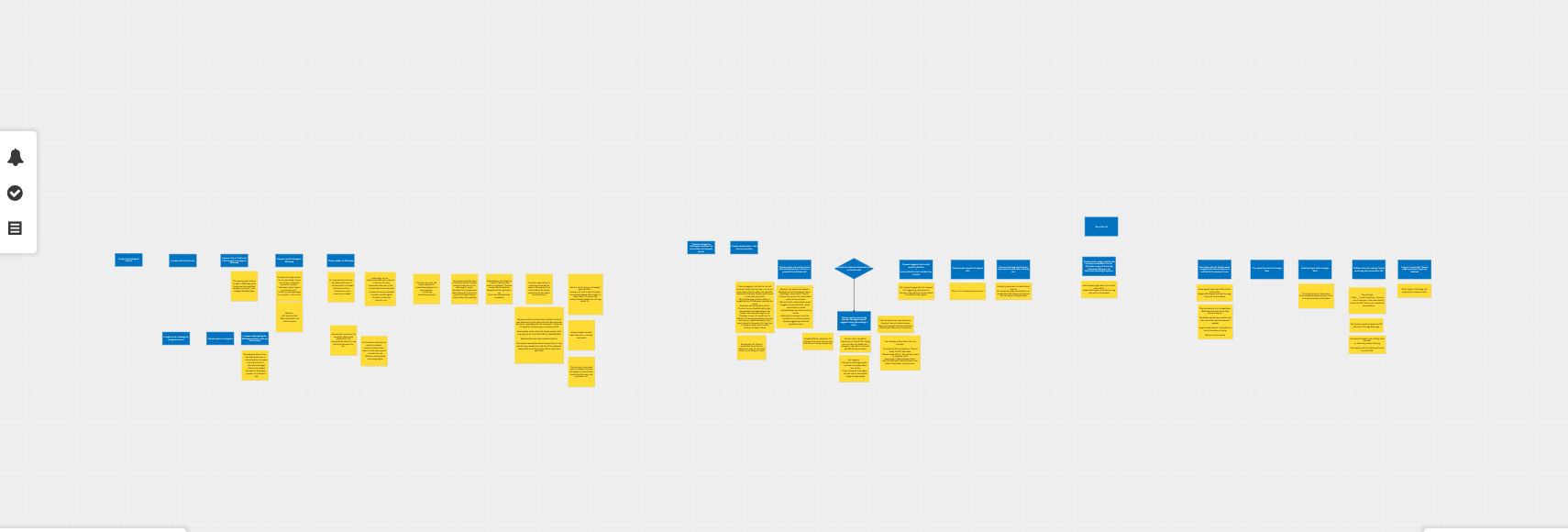How might we help an architect document their initial customer flow?
Published on 2025-03-18
After taking some time off this project, I was back to helping my sister, Thereza, with her business and her challenges. She's an architect structuring her Instagram presence with content about Neuroarchitecture, the approach she works with, and trying to establish her business.
To give more context about what I've already done with her, you could check this previous post here.
As a quick recap, I put myself in her customer shoes and went through the initial experience. From contacting her to having the sales call and the first call after deciding for her services. In that post, I've outlined some next steps (collecting metrics and customer behavior insights) and however I haven't been able to completely work on them, I've made some more progress this week.
One of the things I wanted to do since going through the experience was documenting this initial flow. Last Sunday, I finally had the time to create an initial documentation with the experience and also had the chance to call Thereza to understand it more in details.
The call to understand the journey
After going through the experience as a customer, this call was the first one fully dedicated to talking to her as a "client".
Before the call, I had documented the journey I went through simply creating notes representing each step: from how leads can contacted her, how she replies, when they change platforms, which points could have customer objections, etc. I also wrote doubts I had to clarify with her.
During the call, I was able to go deeper in some important topics. It was not an interview since I didn't have prepared questions but it could feel a bit like it. I tried to get the most understanding out of the current process and I was documenting more findings while we talked.
The journey documentation
In the end, I had the journey documented as you can see (or kind of, since it's too small) in the image below.
Blue boxes are the different steps in the flow, yellow boxes are notes with more information. It's worth mentioning the amount of notes in the middle: they detailed the conversation happening on Whatsapp, which is key for Thereza to understand the project the client needs.

Going through the conversation and creating the documentation was super important to have a better picture of the initial journey. It was great to invalidate small assumptions and it was insightful to talk about parts of the process that I didn't go through.
With all this, I could already identify potential opportunities for improvements in different stages of the journey and it was nice seeing Thereza realising some of them based on the questions I asked. She also brought some ideas for other parts of the journey. This collaboration and proactiveness will be key for us.
Next steps
As mentioned above, a lot of potential opportunities came to mind already and it's good since I'm planning to use Opportunity Solution Tree to help with the discovery process. However, before jumping into this step, I want to still improve on documentating this journey.
In parallel, it will give Thereza enough time to try to collect some metrics for us to have the baseline for this whole initial journey (from first contact to sales call). During the call, we could only note some rough estimations based on what she remembered.
After the call, I also took the opportunity to document what was discussed and add action items for both of us in Google Docs so that we can structure our meetings.
So for the next steps, we would try to:
- Continue documenting the meetings and creating action items in Google Docs.
- Collect data from this journey so that we have a baseline for the future.
- Create a Service Blueprint to better structure the journey, focusing on user perspective and also actions in backstages.